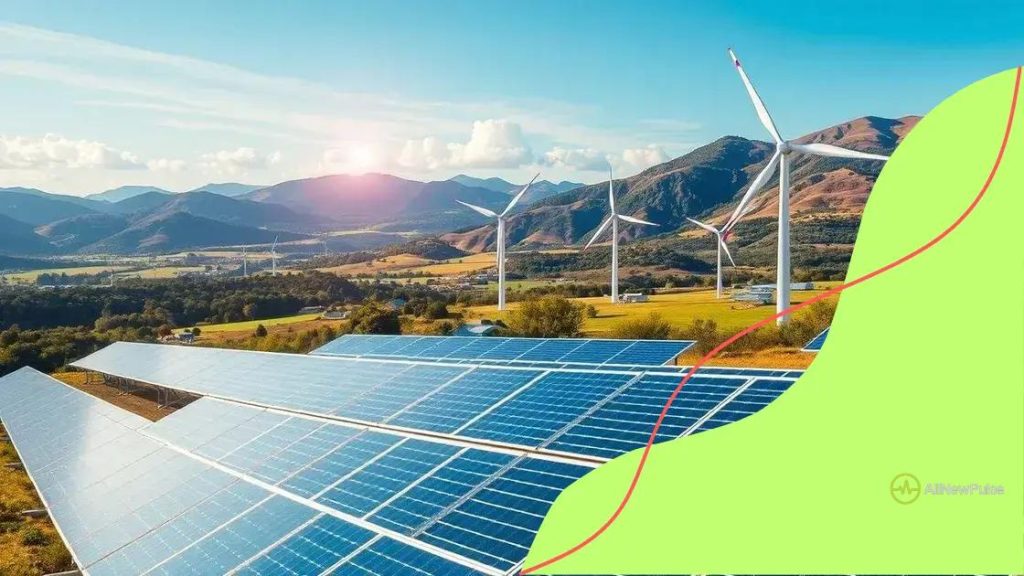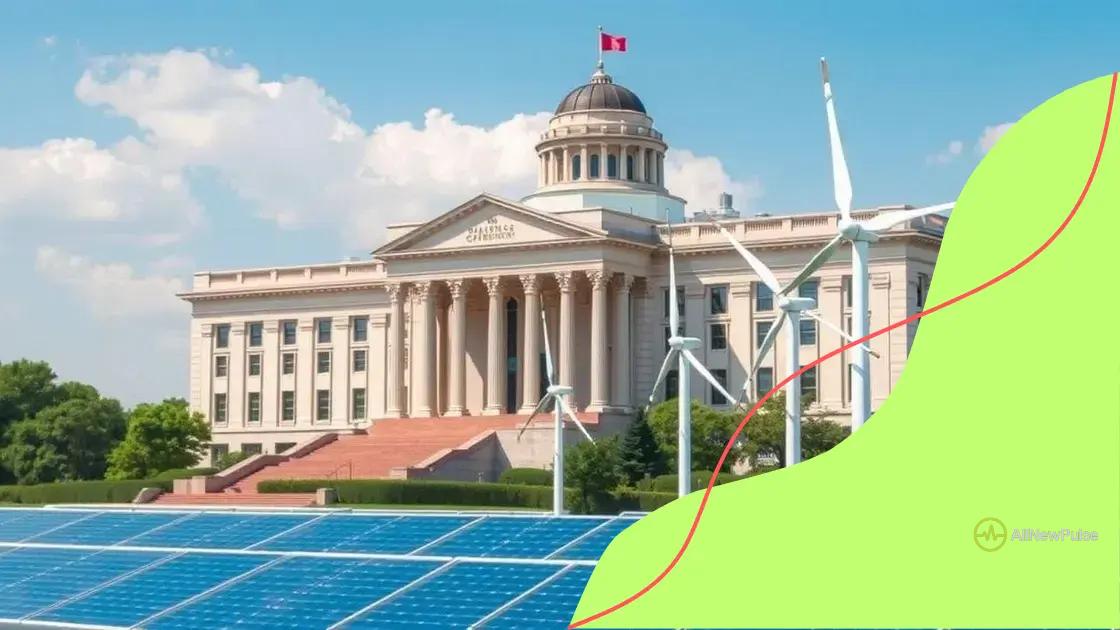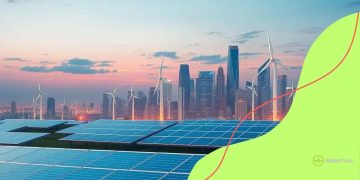Developments in renewable energy adoption increase rapidly

Developments in renewable energy adoption are driven by advancements in technology, supportive government policies, and increased community engagement, paving the way for a sustainable future with cleaner energy solutions.
Developments in renewable energy adoption are becoming a focal point for sustainability. Have you ever wondered how these innovations impact our daily lives and future? Let’s dive into the key aspects shaping this transformation.
The current state of renewable energy
The current state of renewable energy is evolving quickly, as technologies improve and consumers demand cleaner alternatives. Many countries are investing significantly in renewable energy sources to combat climate change and reduce dependency on fossil fuels.
Global Adoption Trends
Today, we see a surge in the adoption of renewable energy worldwide. Countries like Germany and China lead the way in solar power, while many others are making strides in wave energy and geothermal energy. This shift not only benefits the environment but also creates jobs and stimulates local economies.
Key Technologies Driving Change
Innovations in technology are pivotal for the renewable energy sector. Some of these technologies include:
- Photovoltaic cells: Transform sunlight directly into electricity.
- Wind turbines: Harness wind energy to generate power efficiently.
- Energy storage systems: Enable the use of solar and wind energy even when the sun isn’t shining or the wind isn’t blowing.
Furthermore, smart grid technology is revolutionizing how energy is distributed, making it more reliable and efficient.
Government Policies and Initiatives
Supportive government policies are crucial for encouraging renewable energy adoption. Many nations are implementing subsidies, grants, and tax incentives to promote investments in clean energy technologies. Such measures not only help reduce the costs associated with renewable energy projects but also foster an environment ripe for innovation.
Public awareness campaigns further enhance understanding and support for these initiatives. By informing the public about the benefits of renewable energy, governments can encourage consumer participation and investment.
In summary, the current state of renewable energy reflects a dynamic and rapidly changing landscape. The combination of technology advancements, supportive government measures, and increasing public awareness drives the transition towards more sustainable energy solutions.
Key technologies driving renewable adoption
The key technologies driving renewable adoption are revolutionizing how we harness energy. With advancements in innovation, we can now efficiently utilize resources that were once considered impractical.
Solar Power Innovations
One of the leading technologies is solar power. Photovoltaic cells have become more efficient and cost-effective, making solar panels accessible to more households and businesses. Advances in solar battery storage also allow us to capture energy for use during non-sunny periods.
- Flexible solar panels can be installed in various spaces.
- Concentrated solar power systems use mirrors to enhance efficiency.
- Transparent solar panels can be placed on windows, generating energy without obstructing views.
These innovations enable cleaner energy solutions and provide a sustainable alternative to traditional power sources.
Wind Energy Technology
Wind energy also plays a crucial role in the transition towards renewable energy. Modern wind turbines are larger and more efficient than ever, capturing more wind energy to convert into electricity. The shift towards offshore wind farms has opened up new possibilities in harnessing this powerful resource.
Technological advancements in wind energy include:
- Smart blade designs that optimize performance in varying wind conditions.
- Improved gearless turbine technologies that reduce maintenance costs.
- Advanced forecasting models to predict wind energy availability.
Collectively, these developments enhance energy production while minimizing the environmental impact.
In the realm of biomass, innovative processes are transforming organic materials into clean fuel alternatives. By utilizing materials that would otherwise go to waste, we can reduce landfill contributions while generating energy.
These strategies demonstrate how various renewable energy technologies work synergistically to create a cleaner, sustainable future. With continued investments, the potential for growth in this sector remains promising.
Government policies and incentives

Government policies and incentives play a crucial role in accelerating the adoption of renewable energy. These measures help create a supportive environment, making it easier for businesses and individuals to invest in cleaner energy sources.
Key Government Initiatives
Various countries are implementing initiatives aimed at promoting renewable energy. These include:
- Tax credits: Financial benefits that reduce the amount of tax owed for investments in solar, wind, and other renewable technologies.
- Subsidies: Direct financial assistance to help lower the costs of renewable energy installations.
- Feed-in tariffs: Programs that guarantee fixed payments to renewable energy producers for the energy they generate.
- Renewable portfolio standards: Regulations that require utilities to obtain a certain percentage of their energy from renewable sources.
These leverage government resources to foster a transition towards sustainable energy solutions.
Impact on the Market
The effects of these policies are significant. By reducing financial barriers, governments can increase the rate of adoption for renewable energy sources. More people are now able to install solar panels on their roofs or invest in community wind projects. This leads to a more decentralized energy system where individuals have control over their energy production.
Furthermore, as more individuals and businesses adopt renewable energy, it can stimulate job creation in sectors related to installation, maintenance, and manufacturing of green technology. The growth of these industries is vital for economic development and environmental sustainability.
Governments also promote public awareness campaigns to educate citizens on the benefits of renewable energy. By increasing knowledge, they empower citizens to make informed choices and encourage them to participate in green initiatives.
Overall, the synergy between government policies and incentives creates a promising space for renewable energy adoption to thrive, paving the way for a sustainable future.
Case studies of successful implementation
Examining case studies of successful implementation helps highlight the practical benefits of renewable energy adoption. These examples showcase how various cities and organizations have integrated renewable technologies into their operations.
Solar Energy in San Diego
San Diego, California, has made significant strides in solar energy adoption. The city offers incentives for residents to install solar panels, leading to a substantial increase in home solar systems. By 2020, around 20% of the city’s energy came from solar power. This shift not only reduced greenhouse gas emissions but also lowered energy costs for homeowners.
Wind Farms in Texas
Texas is home to some of the largest wind farms in the United States. The state has harnessed its natural wind resources, generating about 30% of its energy from wind as of 2020. This impressive feat has allowed Texas to become a leader in renewable energy, creating thousands of jobs in the process.
- Wind power investments in Texas have led to lower electricity prices.
- The state has continued to expand its grid to accommodate more renewable sources.
- Local communities benefit from job creation associated with wind farm operations.
These case studies demonstrate how effective policies and community engagement can lead to successful renewable energy systems.
Community Solar in Germany
Germany has implemented community solar projects that empower residents to share resources. In these projects, neighborhoods come together to finance solar installations, making renewable energy accessible to those who may not be able to install their systems. This has fostered a sense of community while contributing to Germany’s goal of a sustainable energy future.
These examples illustrate how renewable energy technologies can be successfully implemented across different regions. By learning from these cases, other cities and organizations can adapt similar strategies to promote renewable energy adoption in their communities.
Future trends in renewable energy
Looking ahead, future trends in renewable energy suggest a rapid evolution in how we harness, produce, and consume energy. With technology advancing quickly, we can expect significant changes across various sectors related to sustainable energy.
Emerging Technologies
Innovations such as artificial intelligence and machine learning are beginning to play a role in optimizing renewable energy systems. By analyzing data, these technologies can improve efficiency and predict energy demand, ensuring a better balance between production and consumption.
- Smart grids: These will integrate renewable energy sources more effectively, managing energy flow in real-time.
- Advanced battery storage: Innovations in energy storage will support the use of solar and wind energy, making it available when needed.
- Hydrogen fuel: Development of hydrogen as a clean fuel source could revolutionize transportation and industry.
As these technologies develop, they can really transform energy markets, making renewable options more competitive.
Policy and Investment Shifts
Government policies will also continue to shape the future of renewable energy. As climate action becomes more urgent, more countries are implementing strict regulations to achieve net-zero emissions. This creates a robust framework for renewable technologies to thrive.
Investment in renewable energy is expected to grow as awareness about climate change and sustainability rises. More companies will expand their efforts to include green practices, motivated by both social responsibility and profitability.
Furthermore, community engagement in renewable projects will likely increase. People will want to be part of the solution, which can lead to greater support for local initiatives. By educating communities about the benefits of renewable energy, we can foster a culture of sustainability.
In summary, the future of renewable energy looks bright, with exciting developments on the horizon that will reshape our energy landscape.
FAQ – Frequently Asked Questions about Renewable Energy Adoption
What are the main technologies driving renewable energy?
Emerging technologies like solar panels, wind turbines, and energy storage systems are key drivers of renewable energy adoption.
How can government policies affect renewable energy growth?
Government policies provide incentives, such as tax credits and subsidies, which encourage investments in renewable energy projects.
What role does community engagement play in renewable energy?
Community engagement promotes awareness and participation in renewable energy projects, helping to increase adoption rates.
What does the future look like for renewable energy?
The future of renewable energy is promising, with advancements in technology, supportive policies, and increased public participation driving growth.





